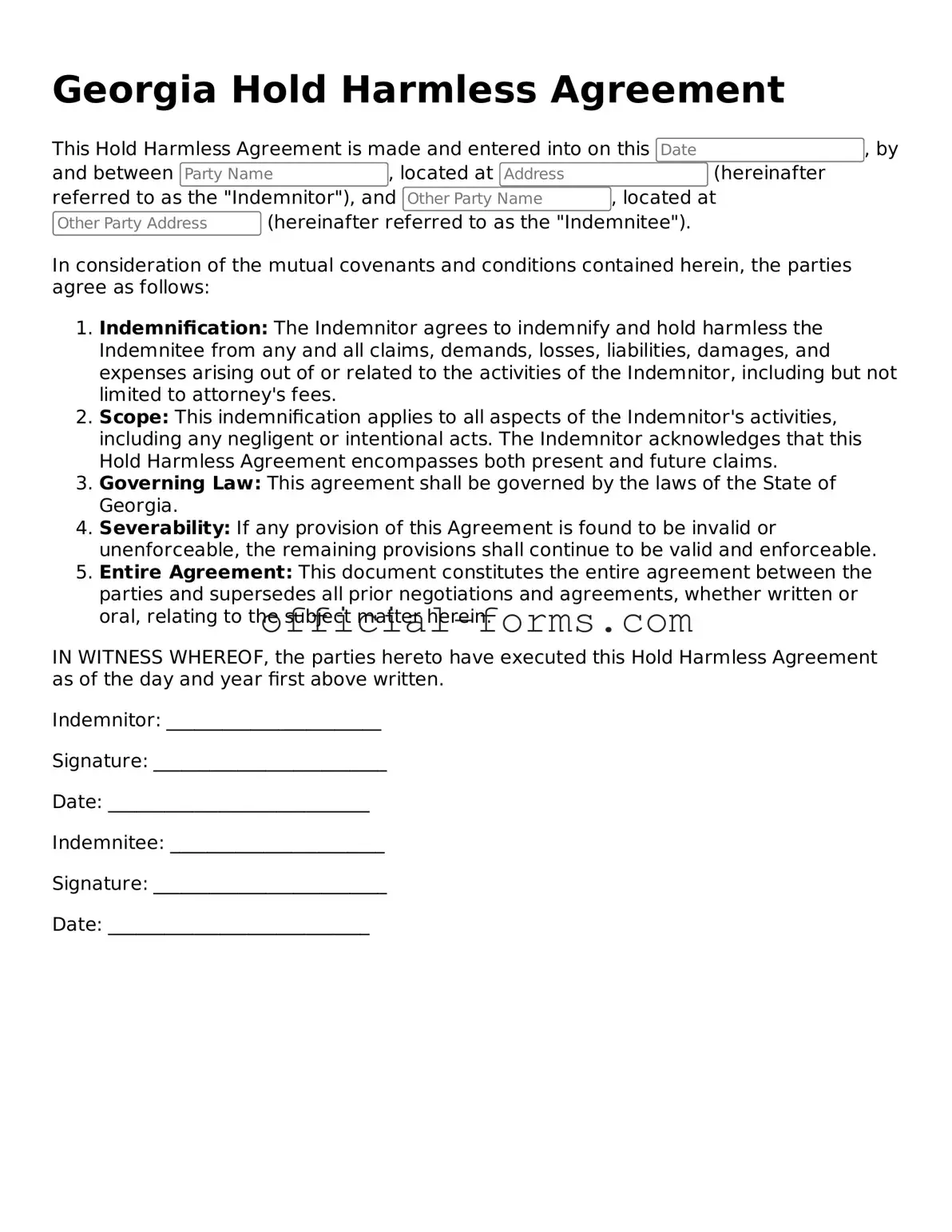Filling out a Hold Harmless Agreement form can be a straightforward process, yet many individuals make common mistakes that can lead to complications. Understanding these pitfalls is essential for ensuring that the agreement serves its intended purpose effectively.
One frequent mistake is failing to read the entire document before signing. Individuals often skim through the text, missing crucial clauses that outline their rights and responsibilities. This oversight can lead to unexpected liabilities that the signer did not intend to accept.
Another common error involves incorrect or incomplete information. When individuals provide inaccurate names, addresses, or dates, it can render the agreement invalid. Accuracy is vital; even a minor mistake can cause significant issues in the future.
Some people neglect to consider the scope of the agreement. A Hold Harmless Agreement should clearly define the activities covered. Without specifying these activities, the agreement may not protect the individual in the event of an incident.
Additionally, individuals often overlook the importance of signatures. Both parties must sign the agreement for it to be enforceable. Failing to obtain a signature from one party can nullify the entire document.
Another mistake involves misunderstanding the legal implications of the agreement. Some individuals assume that signing a Hold Harmless Agreement absolves them of all responsibility. In reality, the agreement only limits liability under specific circumstances, and individuals may still face legal repercussions.
People also frequently ignore the need for witnesses or notarization. Depending on the situation, having a witness or notarizing the document can add an extra layer of validity. Skipping this step can lead to disputes about the authenticity of the agreement.
In some cases, individuals do not consult legal counsel. While it may seem unnecessary, obtaining legal advice can clarify the terms and implications of the agreement. This step can prevent misunderstandings and ensure that the document aligns with state laws.
Moreover, individuals sometimes fail to keep copies of the signed agreement. Without a copy, it can be challenging to reference the terms of the agreement if a dispute arises. Maintaining records is a simple yet crucial practice.
Lastly, individuals may not review or update the agreement as circumstances change. A Hold Harmless Agreement should be revisited periodically to ensure it remains relevant and accurate. Failing to do so can lead to outdated terms that no longer reflect the current situation.
